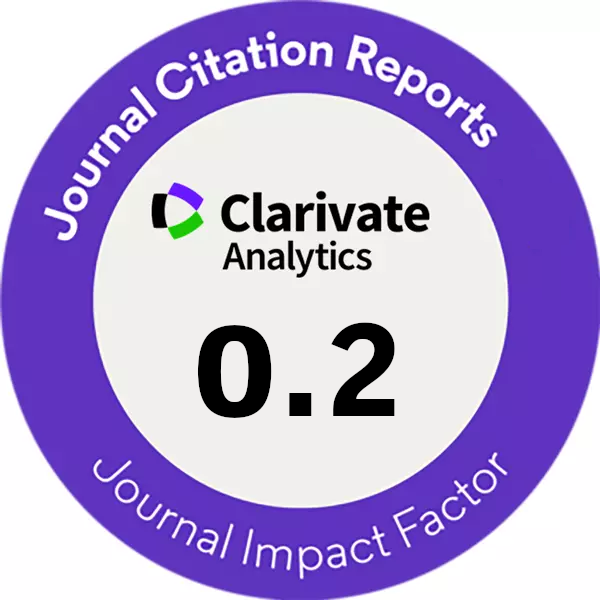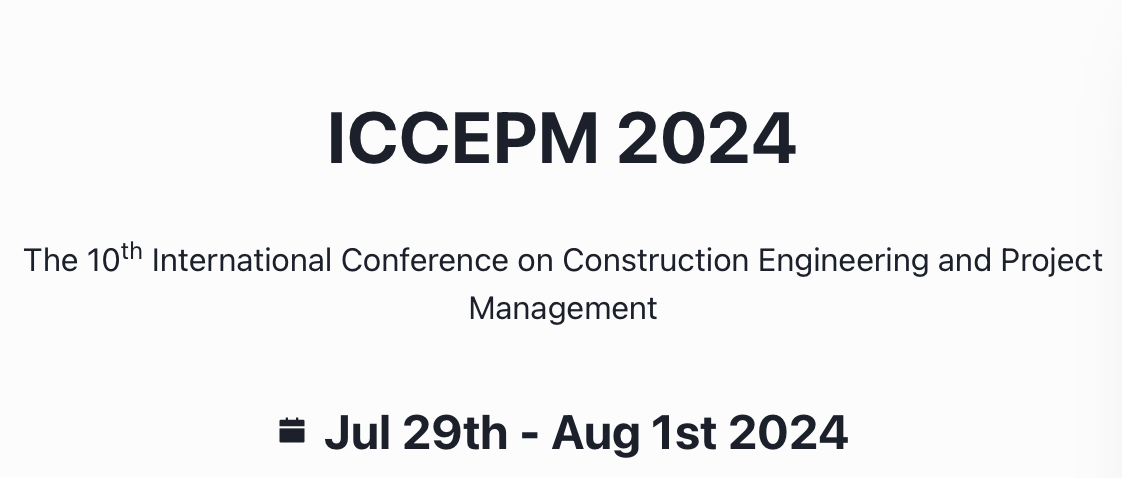RESEARCH ON THE DEVELOPMENT OF LOW-TEMPERATURE-RESISTANT FAST-CURING STRUCTURAL ADHESIVE AND STEEL PLATE STRENGTHENING CONCRETE BEAM FLEXURAL TEST
DOI:
https://doi.org/10.14311/CEJ.2024.01.0006Keywords:
Epoxy resin structural adhesive, Low temperature rapid curing, Steel plate strengthening method, Concrete structure, Debongding failureAbstract
Steel plate strengthening method is a common, efficient, and mature reinforcement method that utilizes structural adhesive to bond steel plates with concrete components to work together. It takes advantage of the excellent tensile strength of steel plates to improve the mechanical properties of the original structure. However, epoxy-based structural adhesives are highly sensitive to the environment, and curing effect at low temperatures is a key issue. This study developed a low-temperature-resistant fast-curing structural adhesive (LTR-FCA) that can achieve rapid curing at low temperatures of -5 °C. The flexural performance of reinforced concrete beams strengthened with steel plates using LTR-FCA was compared with that using Normal Structural Adhesive (NSA). Experimental results indicated that LTR-FCA could rapidly cure at a low temperature of -5°C. Compared to NSA, which cures at room temperature, the use of LTR-FCA effectively delayed the debonding of the steel plates.
Downloads
References
X. Gao, K. Wu, Y. Guo, Y. Zhao, J. Guo, Experimental and numerical study on flexural behaviors of damaged RC beams strengthened with UHPC layer using the bonding technology of post-installed reinforcing bar, Construction and Building Materials. 391 (2023) 131835, doi: 10.1016/j.conbuildmat.2023.131835.
M.M.A. Kadhim, A. Jawdhari, W. Nadir, A. Majdi, Experimental study on RC beams strengthened in flexure with CFRP-Reinforced UHPC overlays, Engineering Structures. 285 (2023) 116066, doi: 10.1016/j.engstruct.2023.116066.
W. Nadir, M.M.A. Kadhim, A. Jawdhari, A. Fam, A. Majdi, RC beams strengthened in shear with FRP-Reinforced UHPC overlay: An experimental and numerical study, Structures. 53 (2023) 693-715, doi: 10.1016/j.istruc.2023.04.117.
D. Mirdan, A.R. Saleh, Flexural performance of reinforced concrete (RC) beam strengthened by UHPC layer, Case Studies in Construction Materials. 17 (2022) e1655, doi: 10.1016/j.cscm.2022.e01655.
X. He, C. Zhou, M. Lv, Y. Wang, Y. Liu, Interfacial stresses of beams hybrid strengthened by steel plate with outside taper and FRP pocket, Journal of Building Engineering. 75 (2023) 107034, doi: 10.1016/j.jobe.2023.107034.
S. Hadi, E. Kazeminezhad, S. Safakhah, Full-scale experimental evaluation of flexural strength and ductility of reinforced concrete beams strengthened with various FRP mechanisms, Structures. 43 (2022) 1160-1176, doi: 10.1016/j.istruc.2022.07.011.
M.J. Jedrzejko, J. Tian, S.S. Zhang, Y. Ke, X.F. Nie, Y.M. Yang, Strengthening of RC beams in shear with novel near-surface mounted (NSM) U-shaped fiber-reinforced polymer (FRP) composites, Engineering Structures. 292 (2023) 116479, doi: 10.1016/j.engstruct.2023.116479.
D. Guo, H. Zhou, H. Wang, J. Dai, Effect of temperature variation on the plate-end debonding of FRP-strengthened steel beams: Coupled mixed-mode cohesive zone modeling, Engineering Fracture Mechanics. 270 (2022) 108583, doi: 10.1016/j.engfracmech.2022.108583.
Z. Wang, J. Xie, J. Li, P. Liu, C. Shi, Z. Lu, Flexural behaviour of seawater–sea sand concrete beams reinforced with GFRP bars: Effects of the reinforcement ratio, stirrup ratio, shear span ratio and prestress level, Journal of Building Engineering. 54 (2022) 104566, doi: 10.1016/j.jobe.2022.104566.
H. Wang, Z. Bian, M. Chen, L. Hu, Q. Wu, Flexural strengthening of damaged steel beams with prestressed CFRP plates using a novel prestressing system, Engineering Structures. 284 (2023) 115953, doi: 10.1016/j.engstruct.2023.115953.
W. Du, C. Yang, Y. Pan, Y. Chen, H. Zhang, Study on the flexural behaviours of precracked hollow core beams strengthened with core filling and unbonded prestressing steel strands, Engineering Structures. 274 (2023) 115075, doi: 10.1016/j.engstruct.2022.115075.
J. Deng, K. Rashid, X. Li, Y. Xie, S. Chen, Comparative study on prestress loss and flexural performance of rectangular and T beam strengthened by prestressing CFRP plate, Composite Structures. 262 (2021) 113340, doi: 10.1016/j.compstruct.2020.113340.
R. Thamrin, Effect of strengthening method and development length on flexural strength of rc beams with steel plates, Journal of Engineering Science and Technology. 13 (11) (2018) 3781-3794.
R. Thamrin, R.P. Sari, Flexural Capacity of Strengthened Reinforced Concrete Beams with Web Bonded Steel Plates, Procedia Engineering. 171 (2017) 1129-1136, doi: 10.1016/j.proeng.2017.01.474.
X. Yan, T. Zheng, C. Lin, G. Lan, H. Mao, Experimental Research on the Impact Resistance of Partially Precast Concrete Beams Strengthened with Bonded Steel Plates, in: Applied Sciences, 2023, p.
R. Thamrin, Zaidir, A. Wahyuni, Shear capacity of reinforced concrete beams strengthened with web bonded steel bars or steel plates, Results in Engineering. 17 (2023) 100953, doi: 10.1016/j.rineng.2023.100953.
C. Liu, Y. He, M. Sun, X. Zhang, B. Zhang, X. Bai, Influence of epoxy resin species on the curing behavior and adhesive properties of cyanate Ester/Poly(aryl ether nitrile) blends, Polymer. 288 (2023) 126450, doi: 10.1016/j.polymer.2023.126450.
F. Zhu, Q. Fu, M. Yu, J. Zhou, N. Li, F. Wang, Synthesis and curing properties of multifunctional castor oil-based epoxy resin, Polymer Testing. 122 (2023) 108017, doi: 10.1016/j.polymertesting.2023.108017.
J. Wei, Y. Duan, H. Wang, W. Zhang, Study on copolymerization modification and properties of bio-based trifunctional diphenolic acid epoxy resin by CE and DPR, Polymer. 284 (2023) 126308, doi: 10.1016/j.polymer.2023.126308.
T.Y.N.G. Wu, Cryogenic mechanical properties of epoxy resin toughened by hydroxyl-terminated polyurethane, Polymer Testing. 74 (2019).
M. Al-Zu'Bi, L. Anguilano, M. Fan, Effect of incorporating carbon- and silicon-based nanomaterials on the physico-chemical properties of a structural epoxy adhesive, Polymer Testing. 128 (2023) 108221, doi: 10.1016/j.polymertesting.2023.108221.
S. Ranji, M.C. Lee, Study on synthesizing new urethane epoxy adhesives and their adhesive properties on different substrates, International Journal of Adhesion & Adhesives (2022) 117A.
L. Karthikeyan, T.M. Robert, D. Mathew, D.D. Suma, D. Thomas, Novel epoxy resin adhesives toughened by functionalized poly (ether ether ketone) s, International Journal of Adhesion and Adhesives. 106 (2021).
O. Moussa, A.P. Vassilopoulos, J. de Castro, T. Keller, Early-age tensile properties of structural epoxy adhesives subjected to low-temperature curing, International Journal of Adhesion and Adhesives. 35 (2012) 9-16, doi: 10.1016/j.ijadhadh.2012.01.023.
O. Moussa, A.P. Vassilopoulos, T. Keller, Effects of low-temperature curing on physical behavior of cold-curing epoxy adhesives in bridge construction, International Journal of Adhesion and Adhesives. 32 (2012) 15-22, doi: 10.1016/j.ijadhadh.2011.09.001.
R. Cruz, L. Correia, S. Cabral-Fonseca, J. Sena-Cruz, Effects of the preparation, curing and hygrothermal conditions on the viscoelastic response of a structural epoxy adhesive, International Journal of Adhesion and Adhesives. 110 (2021) 102961, doi: 10.1016/j.ijadhadh.2021.102961.
Y. Jahani, M. Baena, C. Barris, R. Perera, L. Torres, Influence of curing, post-curing and testing temperatures on mechanical properties of a structural adhesive, Construction and Building Materials. 324 (2022) 126698, doi: 10.1016/j.conbuildmat.2022.126698.
J. Kamalipour, M.H. Beheshty, M.J. Zohuriaan-Mehr, Novel phosphonated hardeners derived from diamino diphenyl sulfone for epoxy resins: Synthesis and one-pack flame-retardant formulation alongside dicyandiamide, Polymer Degradation and Stability. 199 (2022) 109917, doi: 10.1016/j.polymdegradstab.2022.109917.
S. Lin, G. Lai, M. Chen, L. Su, J. Lan, W. Zhong, H. Zhang, Boosting both flame retardancy and mechanical properties of carbon fiber/epoxy composites via polycyclic phosphorus-nitrogen imidazole derivative, Chemical Physics Letters. 805 (2022) 139946, doi: 10.1016/j.cplett.2022.139946.
X. Liu, J. Zhou, M. Wu, S. Liu, J. Zhao, Design and synthesis of anhydride-terminated imide oligomer containing phosphorus and fluorine for high-performance flame-retarded epoxy resins, Chemical Engineering Journal. 461 (2023) 142063, doi: 10.1016/j.cej.2023.142063.
J. Li, Z. Weng, Q. Cao, Y. Qi, B. Lu, S. Zhang, J. Wang, X. Jian, Synthesis of an aromatic amine derived from biomass and its use as a feedstock for versatile epoxy thermoset, Chemical Engineering Journal. 433 (2022) 134512, doi: 10.1016/j.cej.2022.134512.
H. Zhang, J. Gao, Z. Guo, X. Wang, Q. Li, Z. Miao, The influence of the helical twisting power on the bistable electro-optical performance of the liquid crystalline epoxide/mercaptan /negative-dielectric-anisotropy cholesteric liquid crystal composite films, Optical Materials. 142 (2023) 114091, doi: 10.1016/j.optmat.2023.114091.
F. Ahangaran, M. Hayaty, A.H. Navarchian, Y. Pei, F. Picchioni, Development of self-healing epoxy composites via incorporation of microencapsulated epoxy and mercaptan in poly(methyl methacrylate) shell, Polymer Testing. 73 (2019) 395-403, doi: 10.1016/j.polymertesting.2018.11.041.
W. Shen, L. Wang, T. Zhong, G. Chen, C. Li, M. Chen, C. Zhang, L. Zhang, K. Li, Z. Yang, H. Yang, Electrically switchable light transmittance of epoxy-mercaptan polymer/nematic liquid crystal composites with controllable microstructures, Polymer. 160 (2019) 53-64, doi: 10.1016/j.polymer.2018.11.022.
Z. Zhang, F. Gao, L. Li, L. Wei, Z. Su, H. Li, Y. Liu, H. Liu, Y. Liu, Performance study of an epoxy–polythiol curing system for local insulating spraying based on the imbalance stoichiometric ratio, Materials Letters. 351 (2023) 135123, doi: 10.1016/j.matlet.2023.135123.
Z. Belbakra, Z.M. Cherkaoui, X. Allonas, Photocurable polythiol based (meth)acrylate resins stabilization: New powerful stabilizers and stabilization systems, Polymer Degradation and Stability. 110 (2014) 298-307, doi: 10.1016/j.polymdegradstab.2014.09.012.
Y.C. Yuan, M.Z. Rong, M.Q. Zhang, Preparation and characterization of microencapsulated polythiol, Polymer. 49 (10) (2008) 2531-2541, doi: 10.1016/j.polymer.2008.03.044.
MOHURD, Technical code for safety appraisal of engineering structural strengthening materials, in: GB 50728 - 2011, China Architecture & Building Press.
Downloads
Published
Issue
Section
License
Copyright (c) 2024 Stavební obzor - Civil Engineering Journal

This work is licensed under a Creative Commons Attribution-NonCommercial 4.0 International License.
Authors who publish with this journal agree to the following terms:
- Authors retain copyright and grant the journal right of first publication with the work simultaneously licensed under a Creative Commons Attribution License that allows others to share the work with an acknowledgement of the work's authorship and initial publication in this journal.
- Authors are able to enter into separate, additional contractual arrangements for the non-exclusive distribution of the journal's published version of the work (e.g., post it to an institutional repository or publish it in a book), with an acknowledgement of its initial publication in this journal.
- Authors are permitted and encouraged to post their work online (e.g., in institutional repositories or on their website) prior to and during the submission process, as it can lead to productive exchanges, as well as earlier and greater citation of published work (See The Effect of Open Access).
How to Cite
Accepted 2024-03-08
Published 2024-04-30









